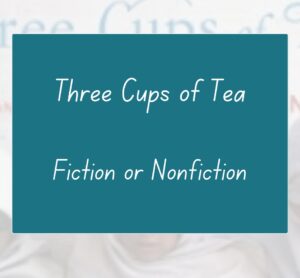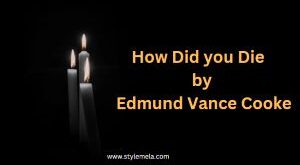Is Three Cups of Tea Fiction or Nonfiction?
“Three Cups of Tea” is a compelling narrative that has captured the hearts and minds of readers worldwide. Written by Greg Mortenson and journalist David Oliver Relin, the book chronicles Mortenson’s journey to build schools in remote and often dangerous regions of Pakistan and Afghanistan.
While the story has inspired countless individuals and garnered widespread acclaim, questions have arisen regarding its classification as nonfiction. This article aims to delve into the debate surrounding the authenticity of “Three Cups of Tea” and explore is three cups of tea fiction or nonfiction?
The Narrative:
The narrative of “Three Cups of Tea” follows Greg Mortenson’s transformative journey from a disillusioned mountaineer to a dedicated humanitarian. After a failed attempt to summit K2, one of the world’s deadliest peaks, Mortenson stumbles into the impoverished village of Korphe in Pakistan’s Karakoram region.
Touched by the hospitality of the villagers, he makes a vow to return and build a school for their children. What ensues is a remarkable tale of perseverance, cultural understanding, and the power of education to effect change in the most challenging circumstances.
Controversies and Criticisms:
Despite its widespread popularity, “Three Cups of Tea” has faced scrutiny over the years, with several controversies casting doubt on the veracity of Mortenson’s accounts. In 2011, a “60 Minutes” investigation and subsequent reports by author Jon Krakauer raised allegations of fabrication and embellishment in the book.
Krakauer’s subsequent expose, “Three Cups of Deceit,” accused Mortenson of mismanaging funds and fabricating key elements of his narrative.
One of the central controversies revolves around the timeline and sequence of events depicted in the book. Critics have pointed to inconsistencies in Mortenson’s recollections, questioning the accuracy of certain anecdotes and interactions.
Additionally, concerns have been raised regarding the management and allocation of funds by Mortenson’s charity, the Central Asia Institute (CAI), which was established to support the construction of schools in the region.
Defenders of the book argue that while there may be discrepancies in certain details, the overarching message and impact of Mortenson’s work remain undiminished.
They contend that “Three Cups of Tea” serves as a powerful testament to the importance of education and cross-cultural understanding in promoting peace and development in conflict-affected regions.
The question of is three cups of tea fiction or nonfiction is complex and subjective. While the book presents Mortenson’s experiences and efforts to promote education in Pakistan and Afghanistan, it has been marred by allegations of inaccuracies and misrepresentations.
Ultimately, readers must approach the book with a critical eye, acknowledging both its inspirational message and the controversies surrounding its authenticity.
Whether viewed as a work of nonfiction or embellished memoir, “Three Cups of Tea” continues to spark important discussions about philanthropy, cultural exchange, and the ethics of storytelling.
Read More:
Three Cups of Tea Chapters Summary

